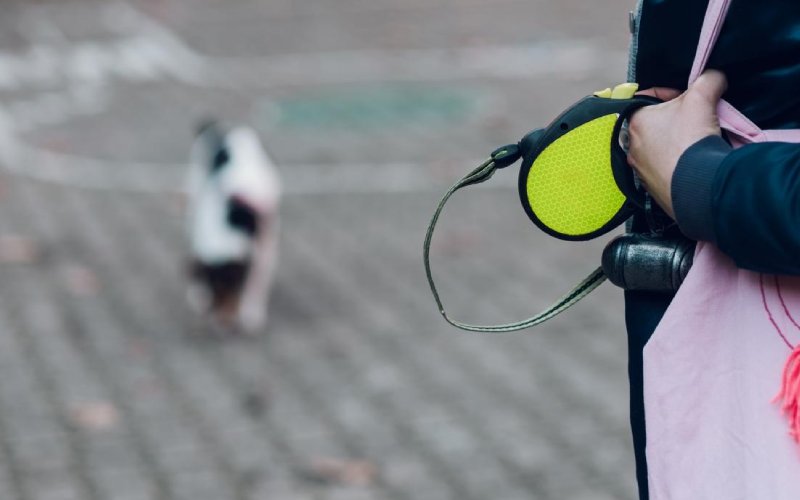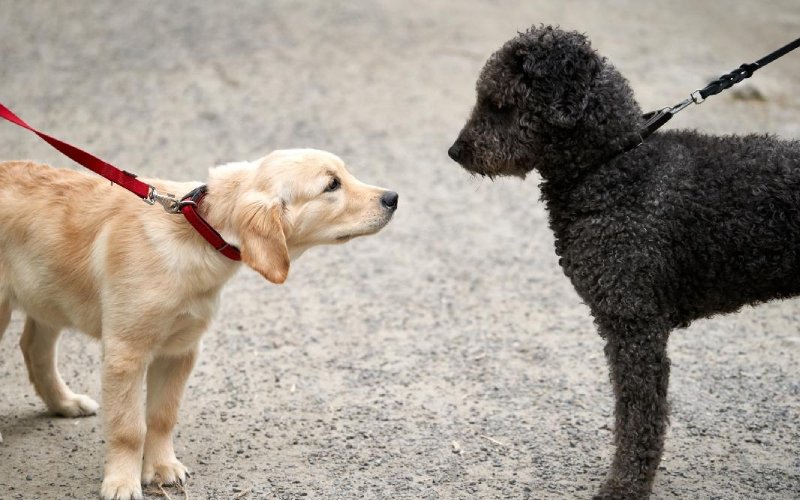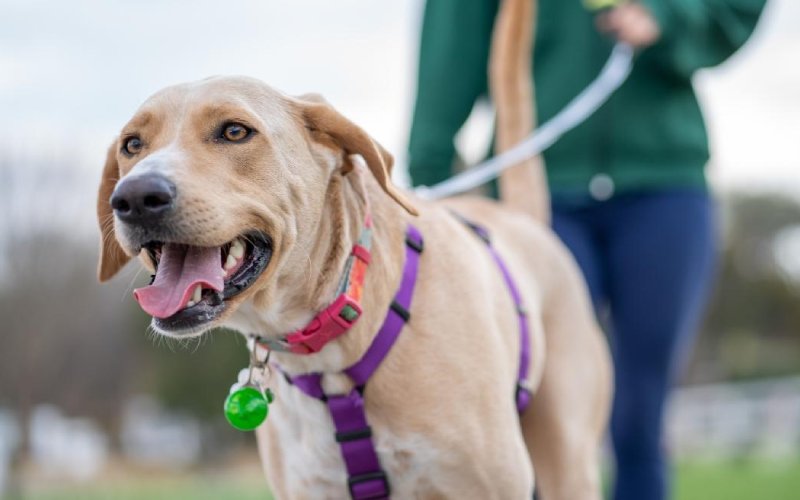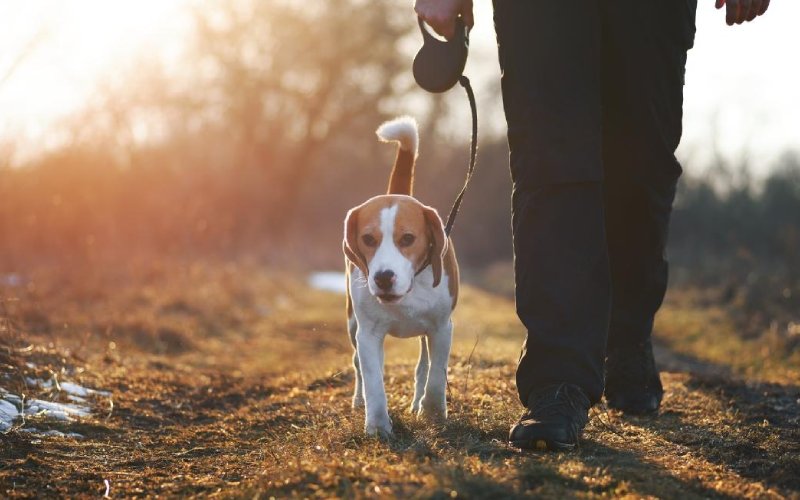When it comes to walking our furry friends, the choice of leash can make a significant difference in both safety and enjoyment. But what about Flexi-leashes, those retractable leashes that have gained popularity among dog owners? Are they the optimal choice for you and your pet? Let’s delve into this.
Flexi-leashes can lead to increased distance from the owner, pose risks like reduced control, risk of cord breakage, encourage pulling behavior, induce fear from dropped handles, malfunction, and are unsuitable for untrained dogs, making them a less suitable option for responsible dog walking.
In this article, we’ll explore the various reasons why Flexi-leashes might not be the best choice for your dog. From safety concerns to training implications, we provide a comprehensive look at why opting for a more traditional leash could be a wiser decision for both you and your canine companion.
Increased Distance, Decreased Control
When we talk about retractable leashes, a key point often overlooked that how they significantly increase the distance between a dog and its owner. This extended length, which offers freedom, actually leads to a substantial decrease in control. Imagine you’re walking your dog in a bustling park or near a busy street. The leash extends, and your dog wanders far enough. And, they’re no longer within your immediate reach. This distance can be particularly problematic in situations where quick action is needed from your side.
For example, if your dog decides to chase after a squirrel or suddenly becomes interested in something potentially dangerous, such as discarded food or unknown substances, the extended leash means they can reach these hazards before you have even a chance to react.
It’s not just about the physical distance; it’s also about reaction time. By the time you lock the leash. Or start reeling your dog back in. They might have already gotten themselves into a risky situation. This lack of immediate control isn’t just inconvenient; it can be downright dangerous.
Difficulty in Emergency Control
Let’s think about a situation that no pet parent ever wants to happen but needs to be ready for — emergencies. Picture this: you’re walking your dog, and suddenly, an aggressive dog comes out of nowhere. In this kind of scary moment, every second is super important. If you’re using a retractable leash, your dog could be way ahead of you, not knowing about the danger.
Trying to reel in the leash to get your dog safe could take too long, and the situation might get worse. This slow response is a big problem with retractable leashes. When things get urgent, we need to act super fast, and these leashes just don’t help with that. Sure, they seem like they give you control with all their buttons and locks, but when it really counts, that control isn’t as quick or sure as we need.
The truth is, in a crisis, it’s key to have your dog right by your side, under control, and retractable leashes can make this hard, possibly putting both you and your dog in danger.
Cord Breakage Risk
One big worry with retractable leashes is that they might break — and this happens a lot when they’re used with super strong and lively dogs. The way these leashes are made, with a thin cord, means they can snap if a powerful dog suddenly pulls or runs.
Picture this: your dog sees a squirrel and zooms after it. That quick pull could make the cord break, and that’s when things can get dangerous. If the leash breaks, your dog could dash into the street or get lost, which is really risky for their safety. And the snapped cord can whip back fast, which might hurt you.
These injuries can be small, like cuts and bruises, or even really bad, like deep cuts or injuries to your face. And this isn’t just a maybe thing — there have been actual reports of such accidents. So, it’s super important to be careful when using retractable leashes.
Encourages Pulling Behavior
Another big problem with retractable leashes is how they can make dogs want to pull more. This goes totally against what you want when training your dog. Here’s the thing — when a dog on a retractable leash starts pulling, the leash gets longer, letting the dog go further. This kind of sends the wrong message to the dog, basically telling them that pulling gets them more freedom to explore.
This habit is really not good if you’re trying to train your dog to walk calmly next to you. And it can turn into a big issue, especially with big, strong dog breeds that are harder to manage.
This pulling thing can even get worse, like when your dog sees other dogs or people because they’ve learned that pulling is how they get to move forward, instead of staying close and under control.
Fear Induced by Dropped Handles
The sound of a dropped retractable leash handle can really scare dogs. It’s not just the loud noise of it hitting the ground, but also how the handle moves unpredictably, following the dog around. This can be super startling for dogs, making them get scared of the leash and even of walking itself.
Picture this: a dog is just minding their own business, sniffing around, and suddenly — bam! The handle drops. The clattering sound and the handle chasing after them can freak them out big time. This scary moment can stick with them for a long time, making them scared of leashes.
Dogs might begin to link the leash with this bad experience, getting anxious and not wanting to go for walks anymore. And walks are super important for their health and happiness.
Malfunction Risks
Retractable leashes — you know, those leashes that can get longer or shorter — can sometimes mess up. They’re like any gadget that can break or not work right. These problems can be anything from the leash not going in or out properly to it suddenly coming undone when you least expect it.
This can make walks a lot less fun and, more importantly, really unsafe. For example, if the leash doesn’t get shorter when you need it to, your dog could end up too far away. This is especially risky near busy streets or other dangers.
And then, if the leash suddenly lets go, your dog might run off in a flash, which could lead to scary accidents or even losing your dog. These troubles aren’t just annoying, they can seriously mess up the safety and control that a leash is meant to give.
Not Suitable for Untrained Dogs
Retractable leashes are not really great for dogs that haven’t learned how to walk nicely on a regular leash yet. See, the thing with retractable leashes is they give dogs a lot more freedom to wander around. And that’s not so good for dogs that are still trying to figure out the basics of walking on a leash.
For a dog that’s still learning not to pull or wander off, a retractable leash can actually encourage bad habits. It lets them get further away from their owner, which makes it way harder to teach them to stick close and walk calmly.
This can be a big challenge, especially for the bigger or super energetic dog breeds that need more control and help during walks. Basically, using a retractable leash on a dog that’s not trained yet can make the whole training thing tougher and take longer for the dog to get good at walking the right way on a leash.
Leash Handling Difficulties
Retractable leashes — those leashes that can get longer or shorter — have some tricky parts for dog owners. Unlike traditional leashes, the retractable variety involves a mechanism housed in a bulky handle. That can be cumbersome to hold and manage – especially during long walks.
One of the primary issues is the difficulty in managing the cord when it gets tangled. Untangling a retractable leash is time-consuming and can also be frustrating.
And, switching the leash from one hand to the other? That can be really awkward because of how big and oddly shaped the handle is. This can be particularly challenging in situations where quick maneuvering is necessary. For example, avoiding obstacles or other dogs. The bulky handle can also be a hindrance in maintaining a firm grip. That also increases the risk of the leash slipping out of the owner’s hand. Which could lead to dangerous situations.
Potential for Serious Injuries
Retractable leashes can actually be pretty risky. They can cause some serious hurt to both the dog and the owner. The thin cord of these leashes can be super dangerous when it’s yanked hard or fast. It can give really bad rope burns and cuts, which hurt a lot and can get infected if you’re not careful. And in really bad cases, there have been incidents, when people’s fingers got so tangled in the cord that it caused a finger to come off during sudden pulls.
For dogs, when the leash suddenly stops, it can hurt their necks really badly, causing cuts or even damaging their windpipe. For the person holding the leash, being pulled suddenly can make them fall down and get seriously injured — like breaking bones or hurting important parts of their body like their eyes, face, shoulders, throat, or neck. This is especially risky with really strong and active dogs that can pull super hard on the leash.
Inappropriate for Multiple Dogs
Trying to walk a bunch of dogs on retractable leashes? That’s a super tough job and comes with lots of problems and risks. The big issue here is that you just don’t have enough control — which you really need when you’re walking more than one dog. These retractable leashes let dogs go far away from each other and from you, making it super hard to keep an eye on them and what they’re doing.
This whole not being in control thing can lead to the dogs getting all tangled up with each other. That increases the chance of someone getting hurt — the dogs or even you. And if there are distractions or dangers around, it gets even trickier. You can’t pull the dogs back fast or keep them close to make sure they’re safe.
Choosing the Right Leash for Your Dog
Picking the right leash for your furry buddy is super important for keeping them safe and comfortable. Let’s explore the main factors you should think about when you’re choosing a leash.
Factors to Consider
- Breed Consideration: Larger breeds require sturdier leashes. While smaller breeds can use lighter ones.
- Size and Strength: If your dog is super strong and full of energy, you’ll need a leash that can handle a lot of pulling and not break.
- Training Level: For dogs that are still learning the ropes, the best choice is a standard, non-retractable leash. It helps you keep control and is great for training.
- Walking Environment: The type of leash you pick should also depend on where you walk. Busy city streets? Quiet parks or country areas? Each place might need a different kind of leash.
- Matching Needs: This one’s important — you’ve got to find a leash that works well for both your dog and you. It should keep both of you safe and comfortable.
Tips for Safe Leash Practices
No matter what kind of leash you pick, being safe and responsible when walking your dog is super important. Here are some tips to keep in mind:
- Always maintain a firm grip on the leash. This makes sure you can quickly control your dog if the need arises.
- Be aware of your surroundings. Keep an eye out for potential hazards like other animals, vehicles, or anything that might startle or harm your dog.
- Regularly check the leash for any signs of wear and tear. A damaged leash can break unexpectedly and lead to dangerous situations.
- Train your dog to respond to commands while on the leash. This can greatly enhance the safety and enjoyment of your walks.
Conclusion
So, in the end, Flexi-leashes, or retractable leashes might look super handy at first, but they actually have several significant drawbacks that outweigh their benefits. The biggest worry is that they can be pretty dangerous. These leashes can stretch out way too far, and that means you might not have enough control over your dog. This could lead to some scary situations, like your dog running into traffic or getting into trouble with other animals. Plus, the thin cord of these leashes can really hurt if it wraps around someone, giving burns or cuts.
And there’s more—these leashes can actually teach your dog some bad habits. They might start pulling or wandering off too far, thinking the leash will just keep letting them go. This can make walks less fun and more of a headache for both you and your dog.
So, even though a leash that gives your dog more freedom sounds like a cool idea, the risks and hassles with Flexi-leashes mean they’re usually not the best choice. Sticking to the regular, fixed-length leashes is often way better for keeping both dogs and their owners safe and happy.
Call us and let us show you what would be the best leash for your dog!
972-372-9225
[email protected]
Olk9dfw.com






